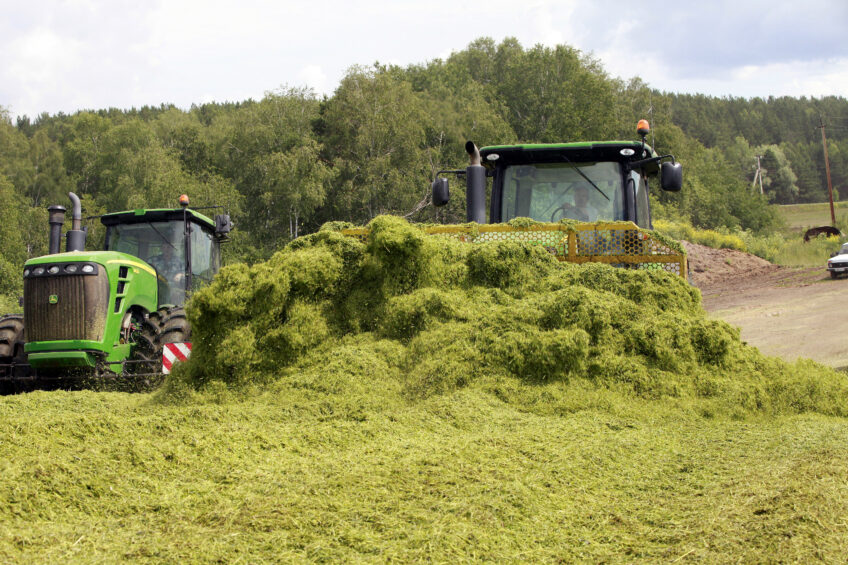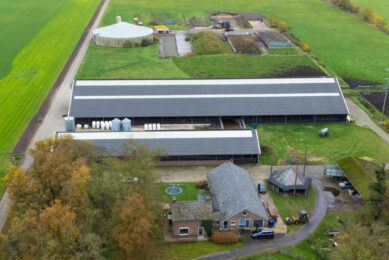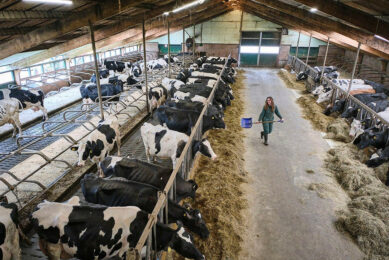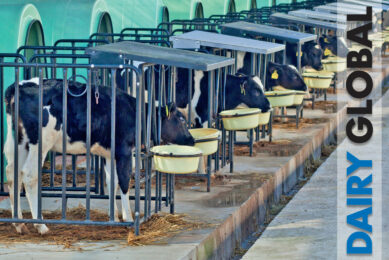4 tips to avoid Clostridic fermentation

How to prevent alfalfa and grass silages from going bad due to Clostridic fermentation? In this article we discuss the critical control points to consider.
Alfalfa and grass silages (haylage) are consistent staples in the diets of high-producing dairy cows globally. This is primarily due to their significant contributions of digestible nutrients and physically effective fibre (peNDF). Still, these forages continue to be some of the most difficult and challenging forages to ensile properly. Although, the vast majority of grasses and legumes are harvested at the proper maturity and ferment properly, we still see about 5-15% that go ‘butyric’ due to Clostridic fermentation. The primary culprit organism is a rod-shaped, gram-positive bacterium that grows under anaerobic conditions and produces butyric acid, acetic acid and hydrogen gas, known as Clostridium tyrobutyricum. Not only significant in the spoilage of alfalfa haylage, this organism is responsible for the late-blowing defect in cheese that can cause considerable challenges in cheese making and storage.

Focus on critical control points
Targeted focus on just four Critical Control Points (CCP), can significantly enhance yield, fermentation, nutrient preservation and overall quality of haylage.
CCP 1: Be aware of maturity
With advancing alfalfa maturity, yield increases but digestibility decreases. It is important to minimise the indigestible tons that are harvested, hauled, stored and fed in order to improve overall efficiency. In addition, make sure you decrease manure load by feeding forages harvested at the optimal maturity.
CCP 2: Stay below 65% moisture
Regardless of maturity, the single most important criterion for successfully ensiling haylage is moisture. At 65% moisture or higher (≤ 35% DM), we greatly increase the risk of formation of butyric acid. Butyric acid is the primary indicator that haylage has gone through ‘Clostridic fermentation’, leading to a reduction in sugar, elevation in pH, degradation of protein, increase in dry matter loss, ‘off’ odours, and poor feed out performance with potential health effects when fed to high-producing dairy cows. The excessive moisture could be inherent to the crop and environmental rewetting conditions at harvest, such as rain or heavy dew. It is important to:
- avoid deep windrows
- be aware of wilting time
- aim for a moisture content of 60% (40% DM), with a narrow ideal range of 58-62% (38-42% DM). Realistically we can expect moisture to stay between 55-65% (35-45% DM) under most conditions and significantly improve the likelihood of avoiding Clostridic fermentation.

CCP 3: Minimise ash contamination
Minimise the inclusion of soil and ash when harvesting alfalfa for haylage. Soil contamination of alfalfa is undesirable for two reasons: it accumulates indigestible ash that serves as ‘filler’ in a nutrient-dense TMR and the potential for higher numbers of Clostridia spores to be ensiled with the forage. The additional Clostridia spores may potentiate an undesirable fermentation. Higher-than-normal ash levels in alfalfa haylage can be a result of picking up additional ash from the soil during mowing, wilting, windrowing, and chopping or substantial dry matter (sugar) losses due to a secondary fermentation event. Please consider: We are harvesting alfalfa as highly digestible nutrients for high-producing dairy cows; we are not landscaping! Keep in mind to mow at slightly slower speeds. This will reduce the amount of scalping due to ‘bounce’ of the haybine or discbine. In addition, it may be necessary to raise the cutter height and slow mowing speed. Raising the cutter height (i.e., from 2.5 to 3.5 inches) will reduce total DM yield, but will increase DM digestibility.
CCP 4: The bunker: Oxygen is the enemy!
The final CCP focuses on diligent management at the bunker/pile or storage structure. Additional avoidable losses can range from 10-30%, and occur at the bunker when attention to details wanes. Oxygen is the enemy! The steps necessary to achieve and maintain oxygen-free conditions are vital to successfully ensiling alfalfa.
- First step is to empower one person to ‘make the call’: Someone needs to be responsible for stopping the harvesting process when the alfalfa delivered to the bunker/pile is too wet.
- Secondly: Fill the bunker/pile rapidly to minimise losses due to plant respiration.
- Thirdly, match harvested forage delivery speed to the bunker/pile, to what the push tractor and packing tractors are capable of handling.
- Also ensure sufficient packing tractor size and weight to obtain density ≥ 18 pounds DM per cubic foot. The ‘Rule of 800’ is still a good minimum. Packing tractor weight needed = tons of alfalfa delivered per hour x 800.
- Also keep in mind to get off the bunker/pile after last load: Additional time spent on the bunker/pile will not necessarily improve DM density.
- And lastly, completely seal the bunker/pile: Whether you line the side walls of a bunker or not, use one or two layers of plastic, apply oxygen barrier or a spray-on preservative, secure with tyres or sand/gravel bags – completely seal the bunker/pile. Time is money in the form of lost nutrients due to exposure to oxygen.

Benefits from the CCPs today
Specific attention to these four aforementioned Critical Control Points (CCP) can enhance yield, fermentation and preservation of higher quality haylage. This will reduce the change that the silage can go ‘butyric’ due to Clostridic fermentation.
Keith is Global Technical Portfolio manager, Silage Inoculants and Cattle Probiotics, Animal Health & Nutrition Commercial Development at Chr. Hansen, Denmark.










